Description and Identification
Graptemys pseudogeographica kohnii is a medium to large map turtle. Females will typically reach 8-10”(20.3-25.4cm), max 10.6” (27cm), while males stay smaller at 3.5-5.5” (8.9-14cm), max 5.9” (15cm). The carapace is olive to brown with yellow, oval-shaped markings and a dark blotch on each pleural scute. It has a defined, but low keel and its posterior edge is serrated. Small vertebral spines are noticeable in hatchlings and juveniles, but almost completely disappear in adult females. The plastron is cream to yellow with an extensive seam following pattern that slowly vanishes with age. The skin of the head, neck, legs, and tail is olive to dark olive with yellow markings. The post-orbital mark is a stripe from the neck that extends toward the orbit and bends completely around the eye forming a crescent. This crescent may be broken as it travels below the eye. This crescent, the white eyes without a transverse bar, and a white beak identify G. p. kohnii from the other subspecies, G. p. pseudogeographica. Males will have longer and wider tails with the cloacal opening 1/2 to 2/3rds of the way down the tail and a more juvenile appearance. Females will have shorter, narrower tails, a much larger build, and broader heads, though not to the extent of the broad-head group of Graptemys species.
-
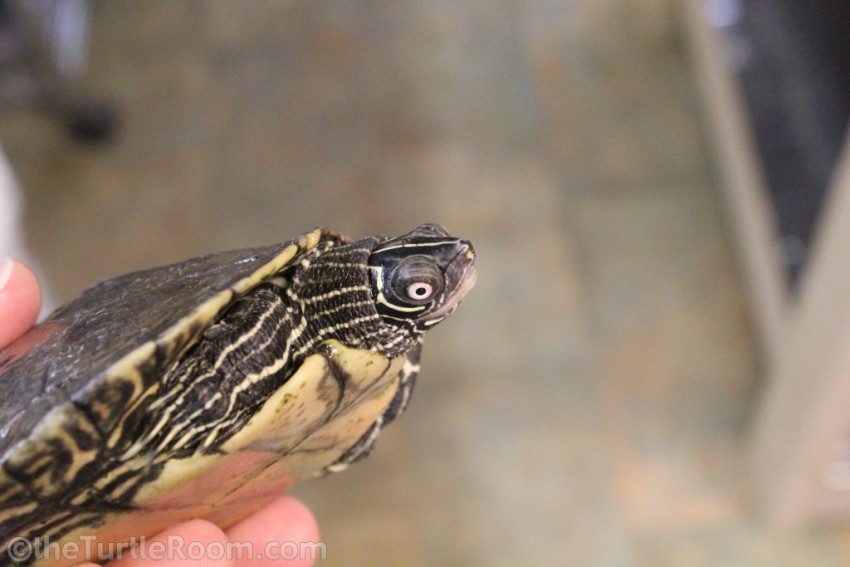 Primary ID: Orbital Crescent (can occasionally be broken) and white eye (typically with no transverse bar)Primary ID: Orbital Crescent (can occasionally be broken) and white eye (typically with no transverse bar)
Primary ID: Orbital Crescent (can occasionally be broken) and white eye (typically with no transverse bar)Primary ID: Orbital Crescent (can occasionally be broken) and white eye (typically with no transverse bar) -
 Secondary ID: White beak and white eye (typically with no transverse bar)Secondary ID: White beak and white eye (typically with no transverse bar)
Secondary ID: White beak and white eye (typically with no transverse bar)Secondary ID: White beak and white eye (typically with no transverse bar) -
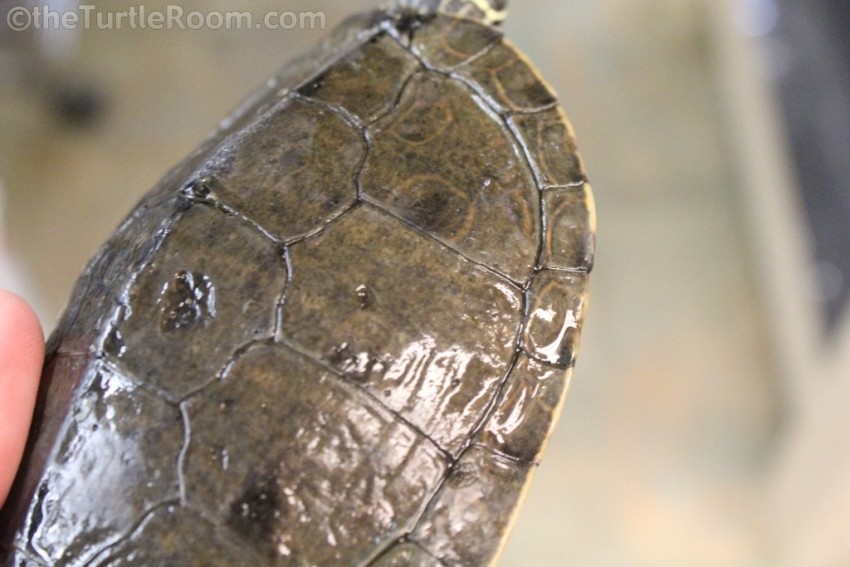
-
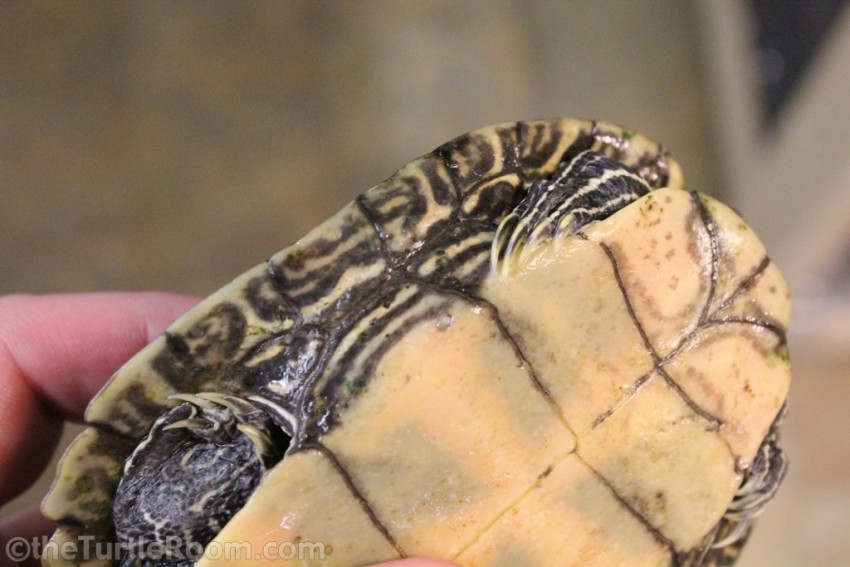
-
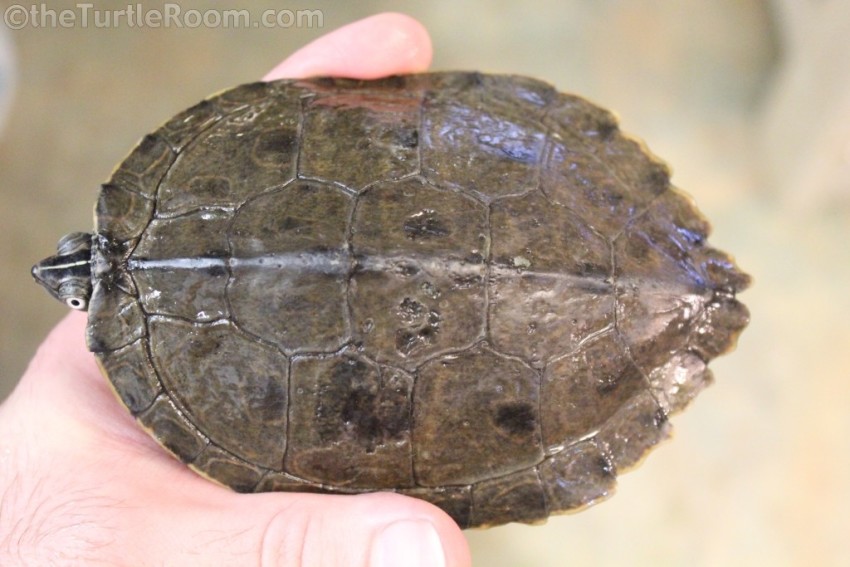
-
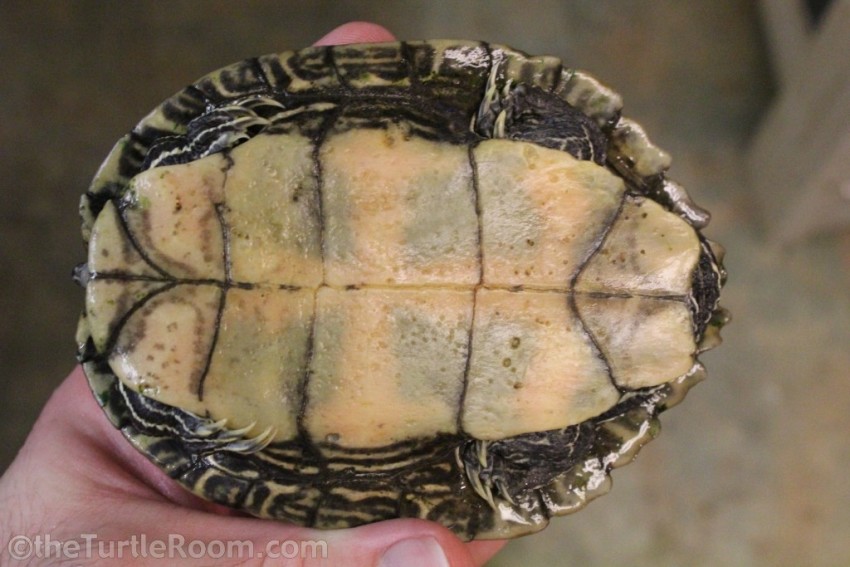
-
 Front: White beak and white eye (typically with no transverse bar)Front: White beak and white eye (typically with no transverse bar)
Front: White beak and white eye (typically with no transverse bar)Front: White beak and white eye (typically with no transverse bar) -
 Side of Head: Orbital Crescent (can occasionally be broken) and white eye (typically with no transverse bar)Side of Head: Orbital Crescent (can occasionally be broken) and white eye (typically with no transverse bar)
Side of Head: Orbital Crescent (can occasionally be broken) and white eye (typically with no transverse bar)Side of Head: Orbital Crescent (can occasionally be broken) and white eye (typically with no transverse bar) -
 Top of Head: Orbital Crescent connects to neck stripesTop of Head: Orbital Crescent connects to neck stripes
Top of Head: Orbital Crescent connects to neck stripesTop of Head: Orbital Crescent connects to neck stripes -
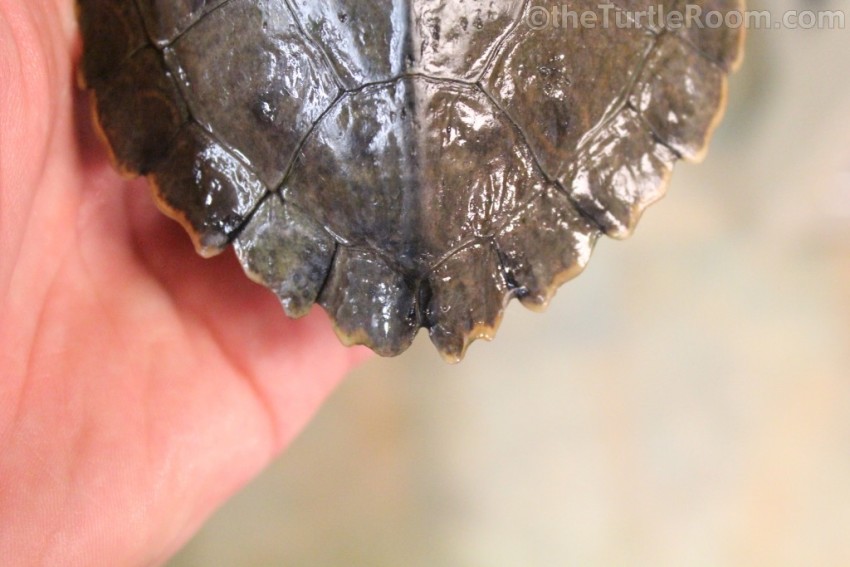
-
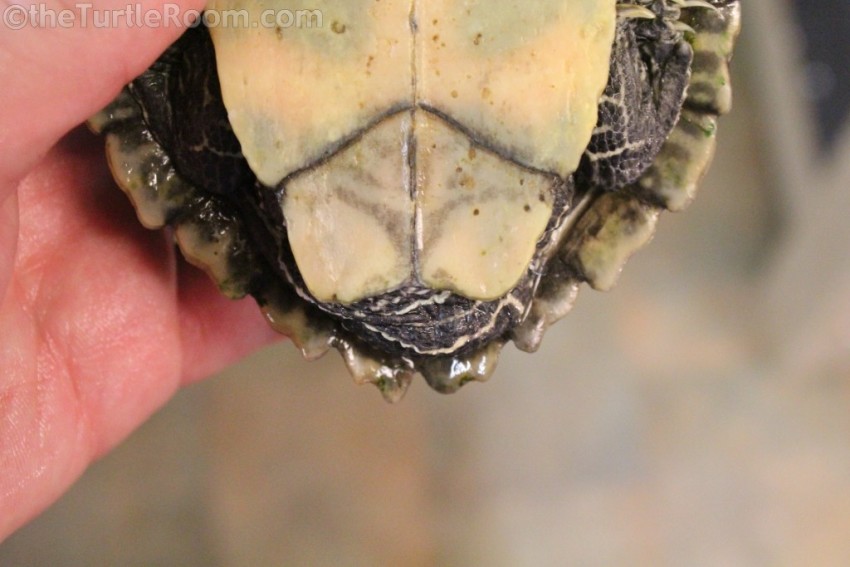
Distribution
The Mississippi Map Turtle is found in the lower Mississippi River watershed. It ranges from western Tennessee west through central Missouri to southeastern Nebraska then south through Arkansas, Louisiana, eastern Kansas, Oklahoma and Texas, and western Mississippi. It may also be found in the Pearl River of Mississippi and Louisiana.
Native Habitat
G. pseudogeographica ssp. primarily occupies large rivers and their backwaters, but will live in lakes, ponds, and more. Plentiful aquatic vegetation seems to be a preference in habitat characteristics, as are slower currents and a multitude of basking locations. At least in Wisconsin, a muck bottom is favored. In Kentucky, there was a wide selection of habitats used by the Mississippi Map Turtle.
Wild Diet
The Mississippi Map turtle is generally omnivorous. Prey species include: freshwater sponges; bryozoans; clams; snails; crayfish; spiders; insects and their larvae; fish; algae; carrion; and assorted seeds, fruits, and leaves of plants. Adult females in the southern end of the range have a primary diet of mollusks.
Behavior
Due to G. ouachitensis ssp. having been previously listed under G. pseudogeographica, much of the behavioral history is partially masked between G. ouachitensis ssp. and G. pseudogeographica ssp. These species are active from late March to mid-October, with shorter active periods in the north and longer active periods in the south. They have a tendency to hibernate in groups. Winterkill has been documented during dry winters in some locations within the range. These species, including juveniles, spend a large portion of their day basking. Selected basking locations are seldom on or near shore and can be as high as 2m above the water surface. While basking, these species are wary and difficult to approach; one turtle re-entering the water due to disturbance often leads others to follow.
Reproduction
Males are sexually mature at a minimum PL of approximately 3" (7.5cm), which they typically reach by the time they are 4-6 years old in the wild. Females mature at a PL around 7.1" (18cm), which may require as many as 8-10 years to reach. Captive specimens tend to grow and mature more quickly due to a nearly year-round growing season.
This Care Guide is an external Care Guide. While it is possible this care guide may not be for the exact species you were looking for, it provides information suitable for your species. This Care Guide link will take you away from theTurtleRoom. We only link to care guides we trust. Thanks for visiting theTurtleRoom.org.
Care GuideIf you would like to contribute to the photo gallery of any turtle or tortoise species, please email us at [email protected]. You will be credited for any photos you contribute.
| Graptemys pseudogeographica kohnii |
| (Baur, 1890) |
| IUCN Red List: |
 |
| Least Concern (2011) |
| Order: | Testudines |
| Suborder: | Cryptodira |
| Superfamily: | Testudinoidea |
| Family: | Emydidae |
| Subfamily: | Deirochelyinae |
| Genus: | Graptemys |
| species: | pseudogeographica |
| subspecies: | kohnii |
| CITES: | Appendix III |
| U.S. Legal Status: |
| No take, possession with permit: Kansas, Kentucky (limit 1). No take or possession in Nebraska without a scientific permit. Take in Texas only for personal possession, no commercial activity allowed. |
Author:
Editors: Stephen J. Enders, Anthony Pierlioni, Chris Leone, Andrew S. Weber, Ben Forrest, and Andrew Hermes
Sources
Disclaimer: The Species Profiles - Natural History, Care Guide, and Photo Gallery database is an educational resource. It does not cover all Chelonian species in the world, nor does it include all the latest scientific information about the species covered. Though we edit our accounts for accuracy, we cannot guarantee all information in those accounts. While theTurtleRoom's staff and contributors provide references to books and websites that we believe are reputable, we cannot necessarily endorse the contents of references beyond our control.

This work by theTurtleRoom is licensed under a Creative Commons Attribution-NonCommercial-ShareAlike 4.0 International License.
























